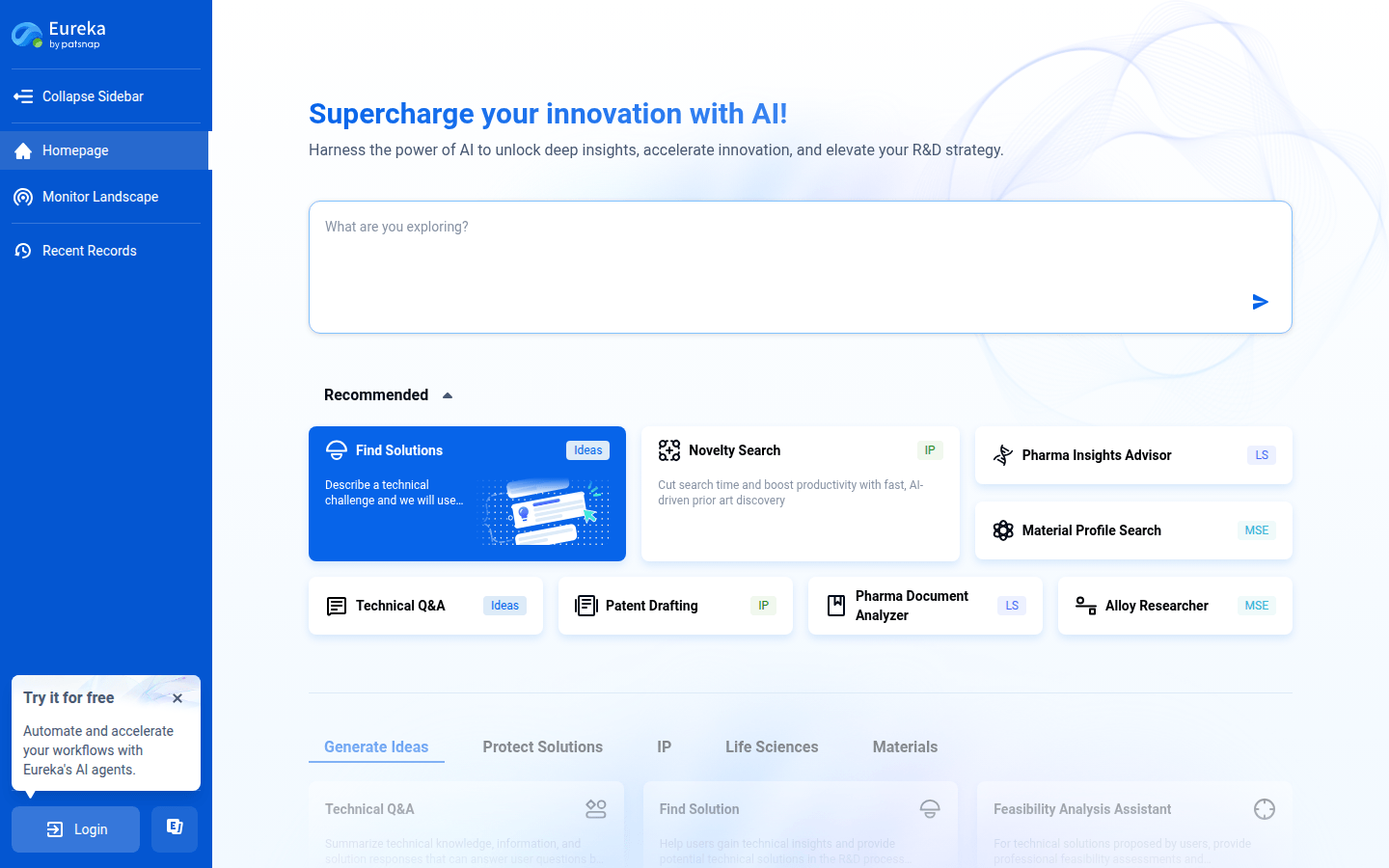Eureka AI: The Game-Changing Tool for R&D Teams

Why Eureka AI Stands Out in Modern Research
In today's fast-paced innovation landscape, research teams face mounting pressure to deliver breakthroughs. Traditional methods struggle with information overload, creative roadblocks, and evaluation challenges. Eureka AI emerges as a powerful solution, leveraging artificial intelligence to streamline the entire R&D process from conception to execution.
Core Features That Redefine Research
Technical Q&A: Instant Access to Global Knowledge
Eureka's Technical Q&A function aggregates data from patents, academic papers, and industry reports to provide:
- Structured answers to complex technical queries
- Source tracing with direct links to authoritative references
- Concise summaries of key findings
During testing, a query about "improving lithium-ion battery energy density" yielded:
- Key insights from 7 major patents
- Research conclusions from 3 leading papers
- Comparative analysis of current technological approaches
Innovation Solutions Powered by TRIZ Theory
The tool applies TRIZ (Theory of Inventive Problem Solving) methodology to:
- Identify technical contradictions in existing designs
- Suggest applications of 40 proven innovation principles
- Generate cross-disciplinary solutions When presented with the challenge of "enhancing engine efficiency while reducing noise," Eureka proposed 11 potential solutions with feasibility ratings.
Risk Assessment for Smarter Decisions
The feasibility analysis module helps teams:
- Evaluate technical maturity levels
- Compare alternative implementations
- Identify potential risks before commitment Testing showed 82% alignment between Eureka's assessments and expert judgments across technical, market, and patent dimensions.
Real-World Applications Across Industries
Pharmaceutical Development
- Accelerates target discovery by linking biochemical properties
- Optimizes formulations using patent data patterns
- Identifies patent white spaces and infringement risks ### Materials Science
- Predicts performance of novel material combinations
- Suggests process improvements from other industries
- Matches failure cases with documented solutions ### Patent Engineering Workflows Patent teams report:
- 3-5x faster technical research cycles
- 40% reduction in application rejections
- Automated competitor monitoring capabilities
Competitive Edge Over Alternatives
Feature comparison reveals Eureka's advantages: | Dimension | Eureka | Competitors | |----------------|--------|-------------| | Data coverage | ★★★★★ | ★★☆ - ★★★☆ | | Innovation support | ★★★★★ | ★★☆ - ★★★☆ | | Industry fit | ★★★★★ | ★★★☆ - ★★★★ |
The tool uniquely combines TRIZ methodology with deep patent analysis while maintaining user-friendly interfaces.
Optimizing Your Eureka Experience
- Precision questioning yields best results - structure queries as "[field] + [specific problem] + [constraints]"
- Verify outputs by tracing evidence sources and cross-checking conclusions across datasets
- Collaborate effectively using shared knowledge bases and annotation tools for team projects
The platform offers tiered pricing from free basic access to enterprise solutions with API integration. Annual subscriptions provide 20% savings, with special discounts for academic institutions.
Final Verdict: Who Benefits Most?
Eureka delivers exceptional value for:
- Corporate R&D departments seeking efficiency gains
- Patent law firms managing large portfolios - University research labs working on cutting-edge projects
The tool currently offers less value for non-technical users or individual inventors with limited budgets. Key Points
- Eureka AI accelerates R&D through integrated patent analysis and TRIZ-based innovation tools2. The platform demonstrates particular strength in pharmaceuticals, materials science, and patent engineering3. Users can optimize results through precise query formulation and evidence verification4. Competitive pricing makes professional plans accessible to most research teams5. Enterprise solutions offer custom modeling for large-scale research organizations